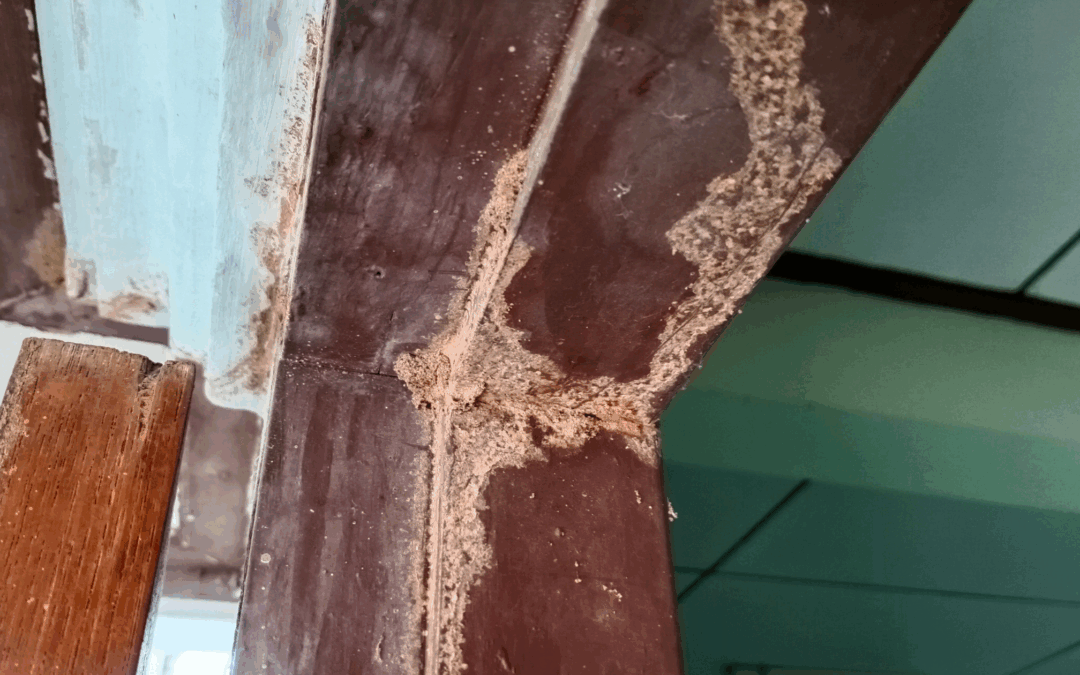READY TO GET STARTED?
REQUEST A FREE ESTIMATE
Fill out the form below or call (888) 466-7849 for a free, no-obligation estimate.

Fort Myers’ warm, coastal environment makes it a perfect breeding ground for termites, and drywood termites are among the most destructive species in the area. These silent invaders don’t need soil to survive, allowing them to infest wooden structures like walls, furniture, and flooring. Their hidden colonies can cause thousands of dollars in damage before you even spot the problem.
With its consistent warmth and humidity, Fort Myers offers ideal conditions for drywood termites to thrive year-round. Homes with exposed wooden features like decks, siding, or furniture are especially vulnerable to infestations.
For homeowners in the region, staying proactive is key to avoiding long-term structural damage.
Drywood termites are particularly dangerous because they live and feed within the wood itself, leaving no visible tunnels like their subterranean counterparts. Their infrequent visibility often means the damage is severe by the time it’s found.
Look for subtle clues that termites may be present in your home, such as:
Because their colonies remain hidden within the wood, professional inspections are often the best way to confirm termite activity early.
Prevention is always easier and more affordable than repairs. Taking proactive steps to safeguard your home can go a long way in avoiding termite issues altogether.
Drywood termites may be hidden, but their impact can devastate your home’s integrity and your wallet. The key to combating these invaders is understanding the risks, knowing the signs, and acting quickly when issues arise.
By staying proactive with sealing, inspections, and professional pest control, you can keep your Fort Myers home safe from these silent destructors. Invest in termite prevention today with a pest control company near you and enjoy peace of mind for years to come!

Drywood termites are quite common in the South Florida area, thriving off our year-round dry and humid temperatures. This termite type can be difficult to spot in homes and will often go undetected for lengthy periods, causing considerable structural damage. The best way to avoid the costly damage of drywood termites is to understand their characteristics and the preventative measures you can place to deter them away from your property. Let’s learn more about these household pests and drywood termite control tips to protect your home.
Unlike the subterranean termite, drywood termites do not need to live in soil to survive. These termites will instead excavate wood to create a colony and live. Drywood termites will seek out dry wood, hence their name, to build a nest and live in it, such as attic framings. Drywood termites have an oval-shaped waist, short legs, and a cream to light brown colored body.
Often, drywood termites get into your Florida home by hitchhiking through an already infested piece of old furniture, picture frame, or other wooden structure. While they don’t create mud tubes like the subterranean termite to enter the home, they instead fly directly to the wood they infest. They’ll also enter homes through open gaps or cracks around window frames, doors, soffits, and attics.
Since termites live in excavated wood, it can be hard to identify them but there are plenty of signs you can lookout for. A good indication that termites have created a colony in your home is spotting discarded wings near windowsills or doors and finding droppings or frass that look like small mounds of tiny pellets inside or around your home.
There are several preventative do-it-yourself methods you can use throughout your Florida property; consider these:
If you’ve noticed signs of termite activity on your property or would like to get started on drywood termite control, reach out to your Florida pest control company! Termite professionals will provide you with a free home inspection, a treatment plan based on your termite control needs, and a prevention plan to avoid a future infestation.